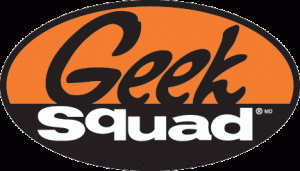Has anything changed in a week? At least in Brandland? Since the hubbub from the Super Bowl ads has subsided, what do we remember? More importantly, do we care about any of it?
Two ads remain fresh and moving to me a week later, because they’ve found a place in my heart. While both could be improved as pieces of advertising, they remain ingenious pieces of human truth that bear repeated viewing, and they offer lessons for others to emulate.
VW Ad: Textured Narratives
Yes, the VW Passat ad with the mini Darth Vader needs better brand/product registration. But it lingers because it captures some important things wonderfully well:
1. People are multi-dimensional:
The little kid doesn’t just want super-powers. S/he wants to be a badass. Would it have been half as effective if the kid aspired to be Luke Skywalker or Superman?
Likewise, the dad is multi-textured: low-key, sweet and empowering. He’s not a tedious Dumb Dad or his more recent incarnation, Reluctant but Excited Expectant Father. He’s a more upscale Jim Halpert when Ceci’s about five. He knows kids, and he’s been a kid.
2. We all crave magic in our lives:
I’m still waiting for my personal flying vehicle long-promised by The Jetsons., but I’d probably settle for a jetpack. Star Wars brims with amazement as second-nature stuff. With a remote starter, VW can put some everyday magic in your hand. Who wouldn’t want a little bit of The Force in their life?
3. Borrowed interest with depth is more interesting:
VW paid a bundle for the rights to use Star Wars music and imagery no doubt, but it got a lot, too. A little evil Dark Lord is charming, of course. But VW also gets an entire chain of associations. The dad would have been about the kid’s age when Star Wars came out in 1977. There’s a subtle passing-of-the-torch here that we can recognize at some level. He’s supporting his child in dreams he himself would have had at that age. Cool, deep–and possibly unconscious on Deutsch’s and VW’s part, but let’s give them the credit.
Companies use celebrities as borrowed interest all the time to create aspirational figures. They get our attention, and they make us want to be them, to want what they want. VW gets our attention through iconic imagery and instantly recognizable music, and creates an aspirational figure to boot. An Everydad/Everyhusband with a sexy eyebrow lift. Will it sell Passats? We don’t know yet, but I bet it will get a lot more families to consider a VW.
Winning Elements
By using characters and associations with depth and texture, and by tapping universal yearnings, VW has created something that does more than entertain. It touches us subtly, without overblown sentimentality. Its shortcomings are fixable. Other ads have more information, better brand registration, yet they leave us fleetingly amused at best. Most of us have plenty of access to information and entertainment in our lives, yet how often are we moved by something with a light touch of human grace?
In my next post later this week I’ll take on the other ad that still lingers, inspires and, yep, brings a tear to my eye every time I watch it.




